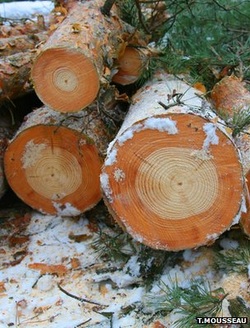
of the external environment. Elevated levels of background ionizing radiation
may impair growth trajectories of trees by reducing the annual growth. Such
effects of radiation may depend on the individual phenotype and interact with
other environmental factors such as temperature and drought. We used
standardized growth rates of 105 Scots pine Pinus
sylvestris located near Chernobyl, Ukraine, varying in the level of
background radiation by almost a factor 700. Mean growth rate was severely
depressed and more variable in 1987–1989 and several other subsequent years,
following the nuclear accident in April 1986 compared to the situation before
1986. The higher frequency of years with poor growth after 1986 was not caused
by elevated temperature, drought or their interactions with background
radiation. Elevated temperatures suppressed individual growth rates in
particular years. Finally, the negative effects of radioactive contaminants were
particularly pronounced in smaller trees. These findings suggest that radiation
has suppressed growth rates of pines in Chernobyl, and that radiation interacts
with other environmental factors and phenotypic traits of plants to influence
their growth trajectories in complex ways.
 RSS Feed
RSS Feed